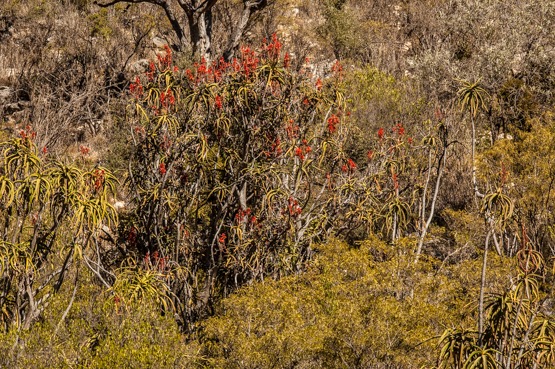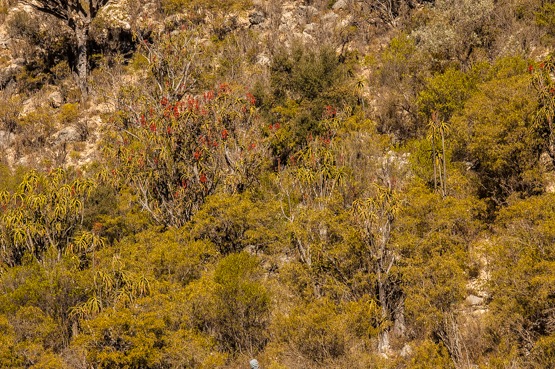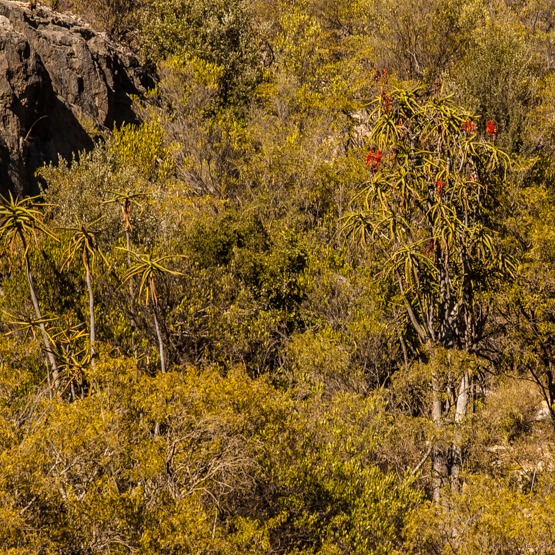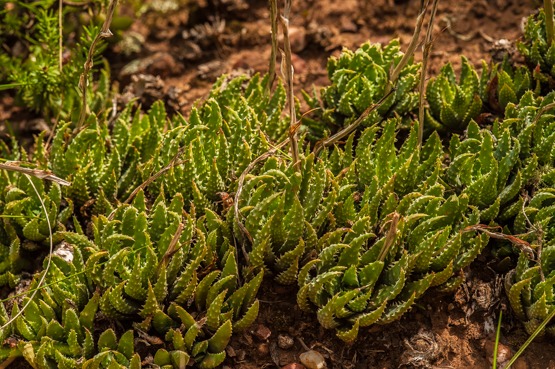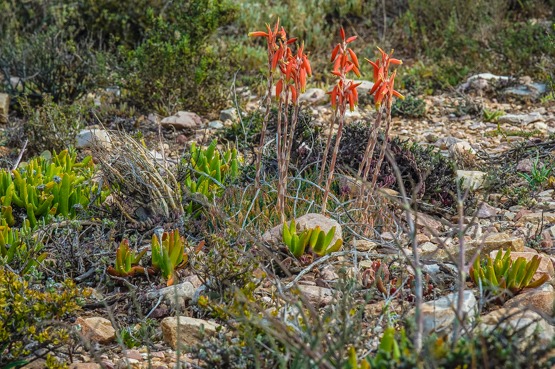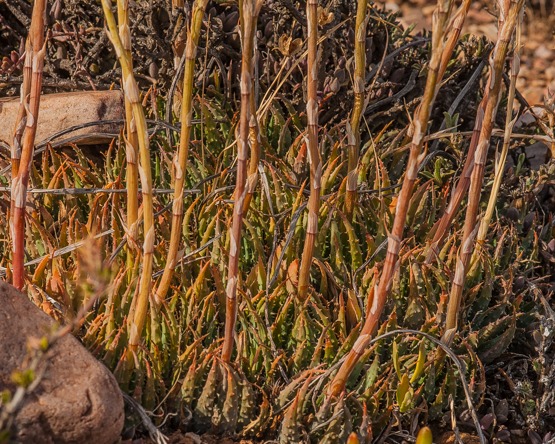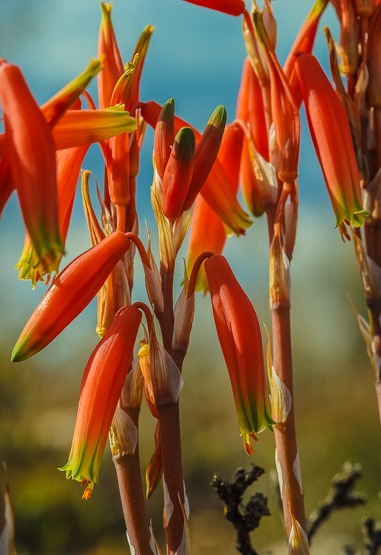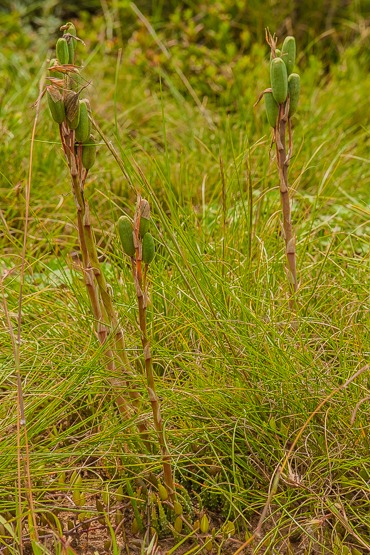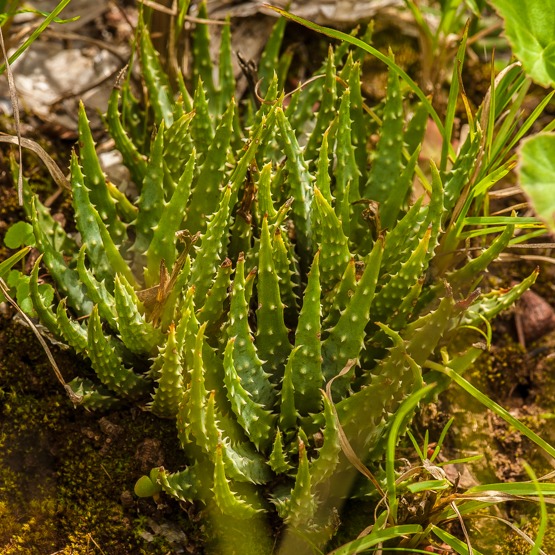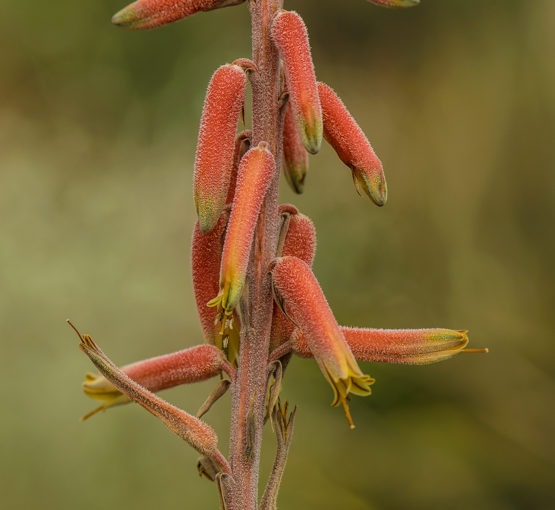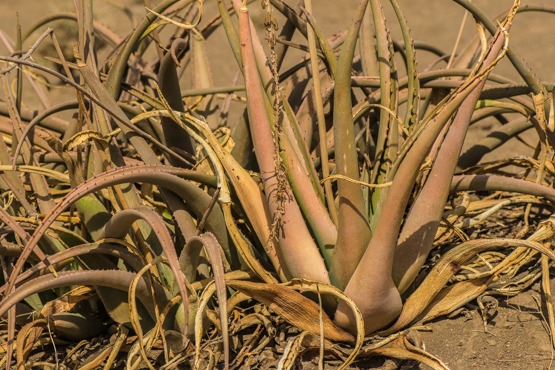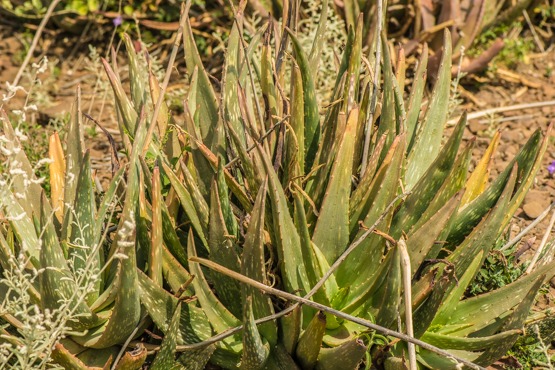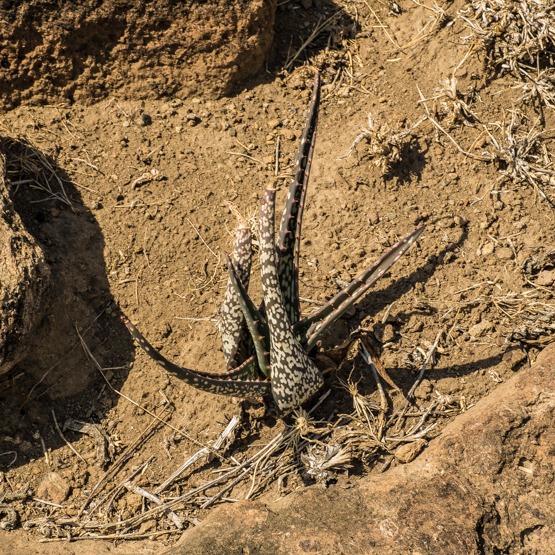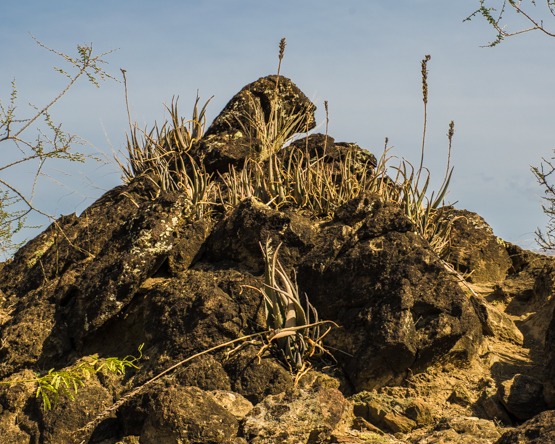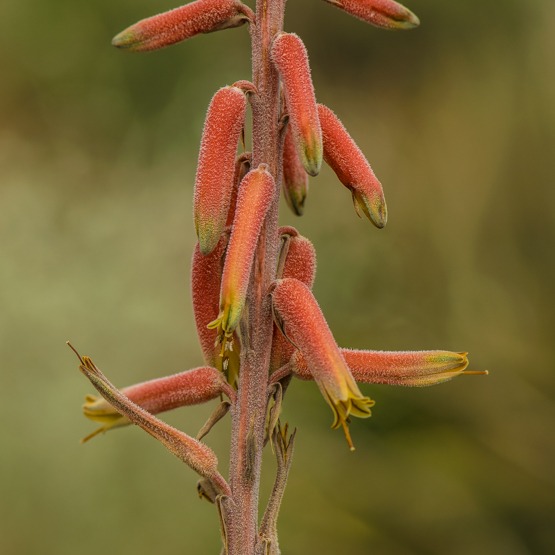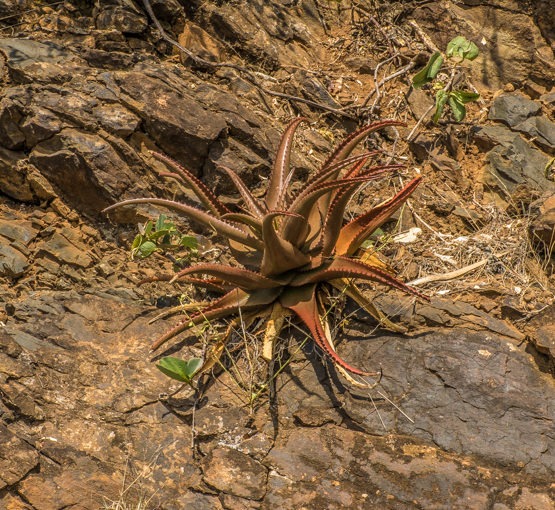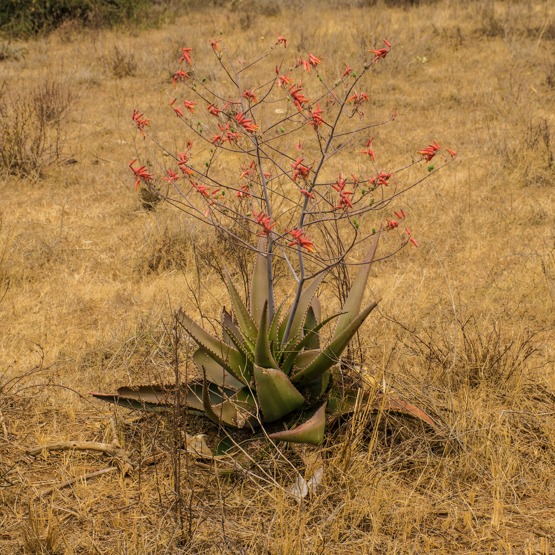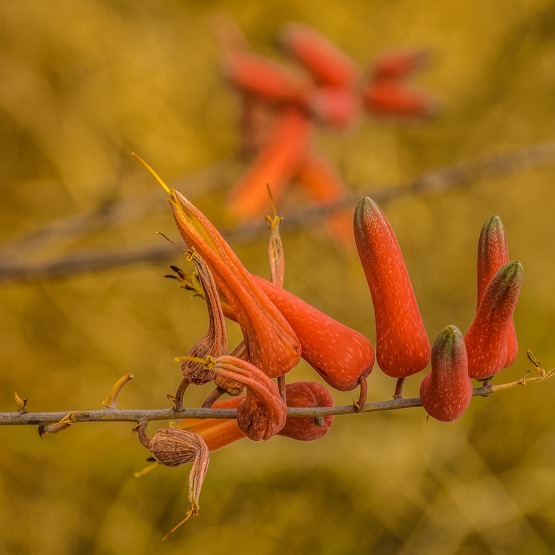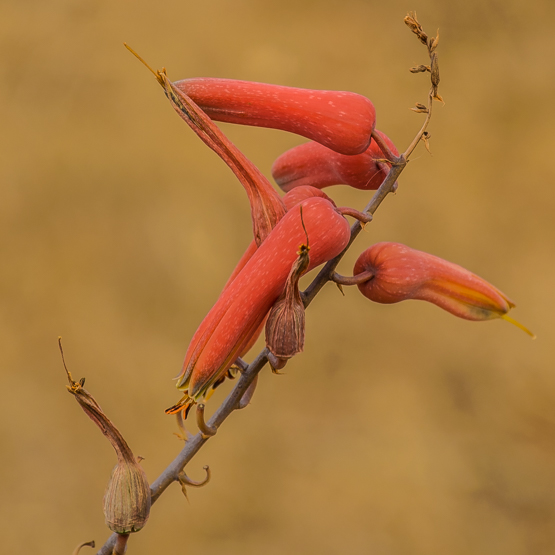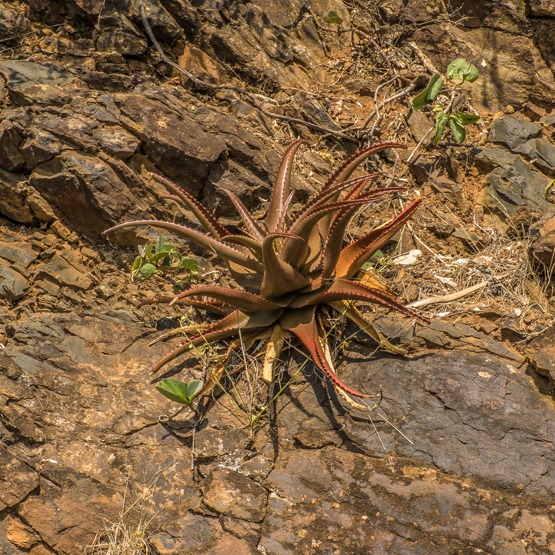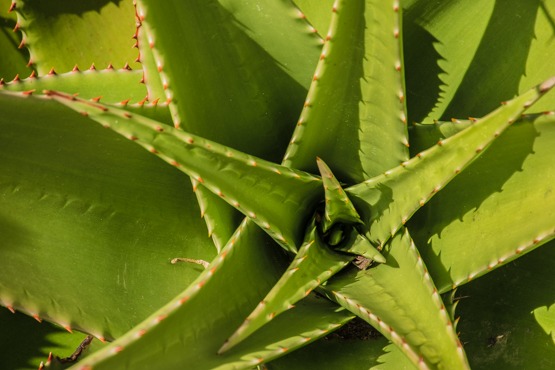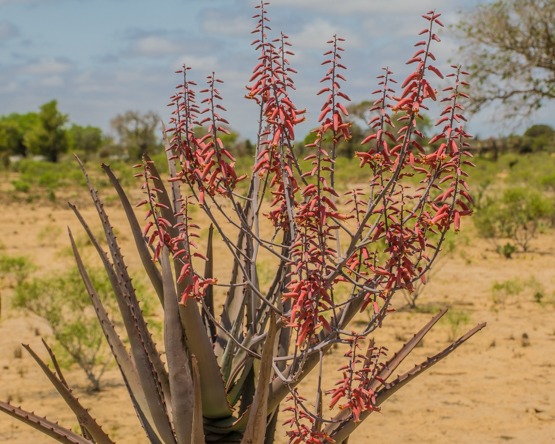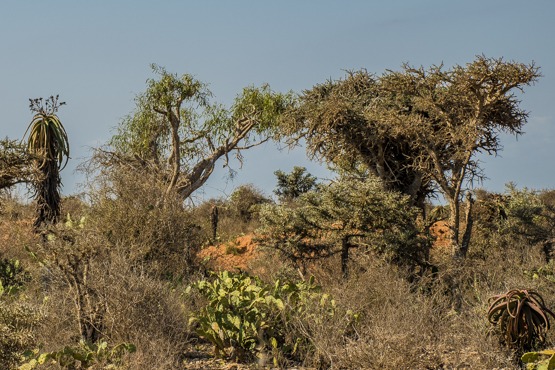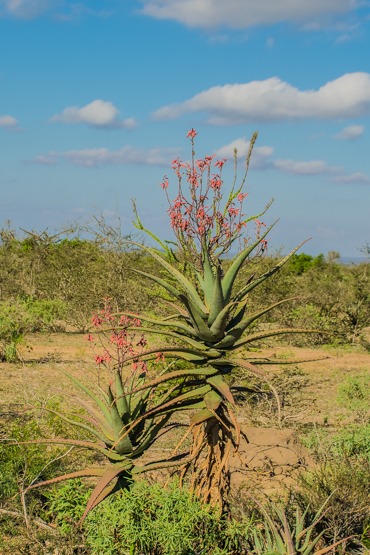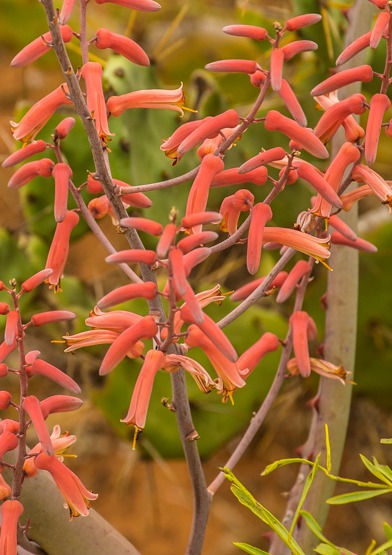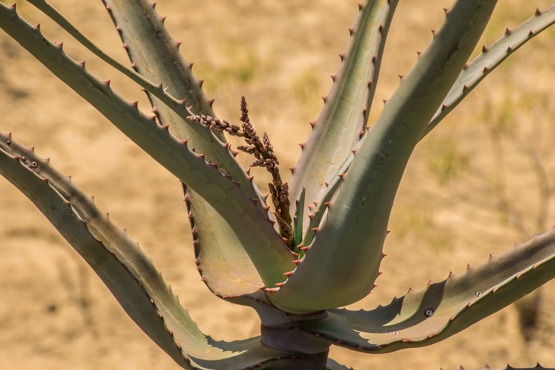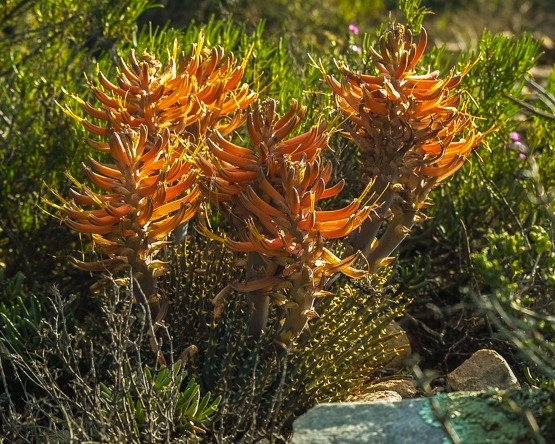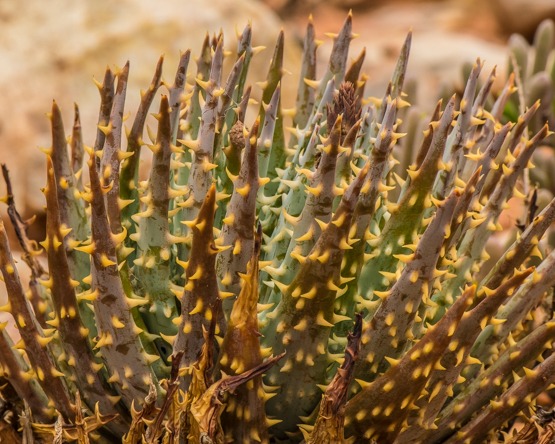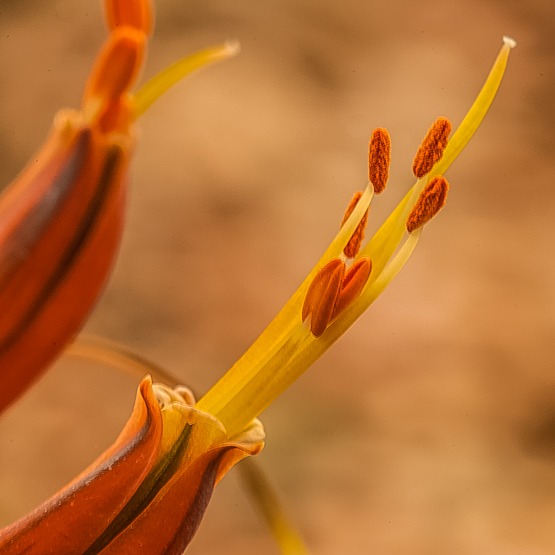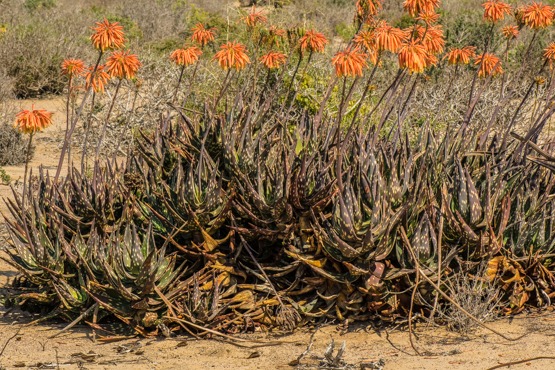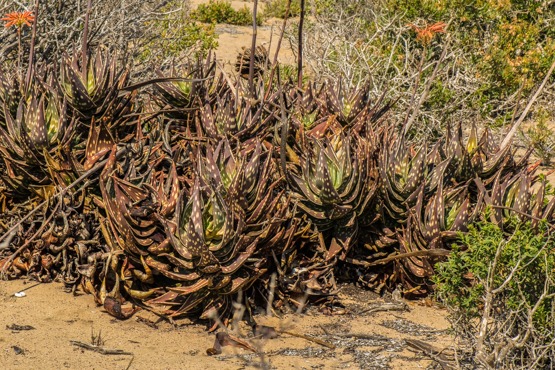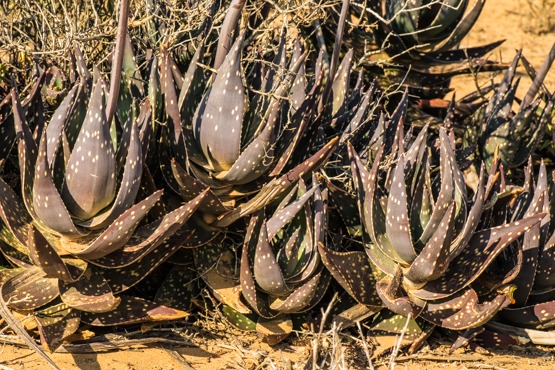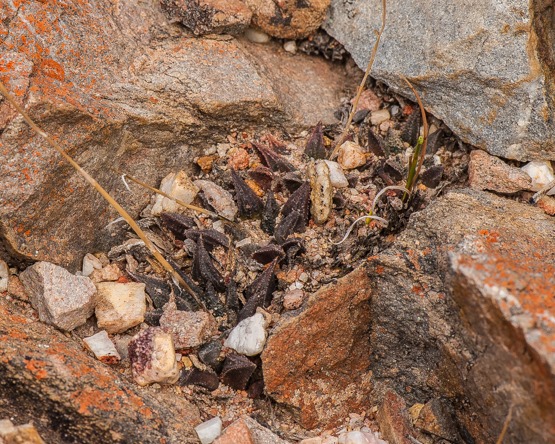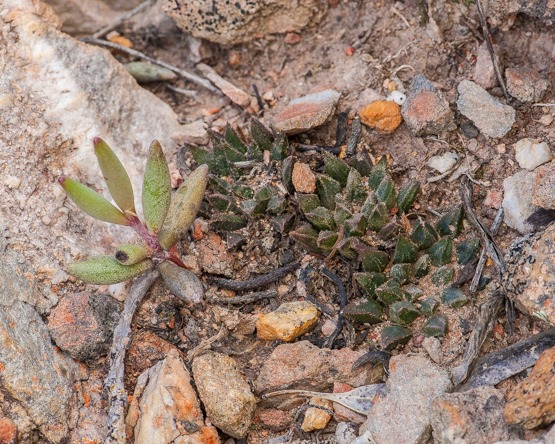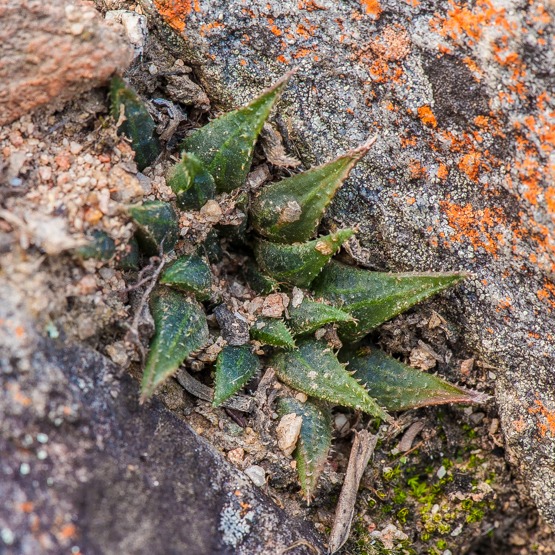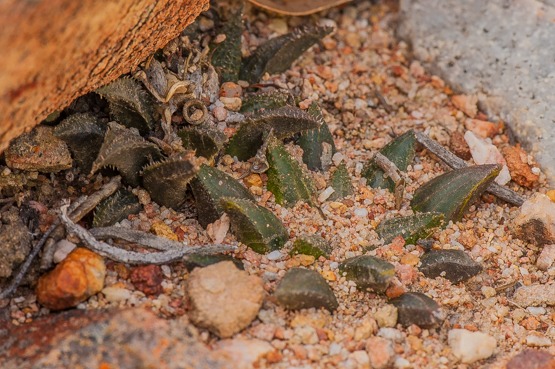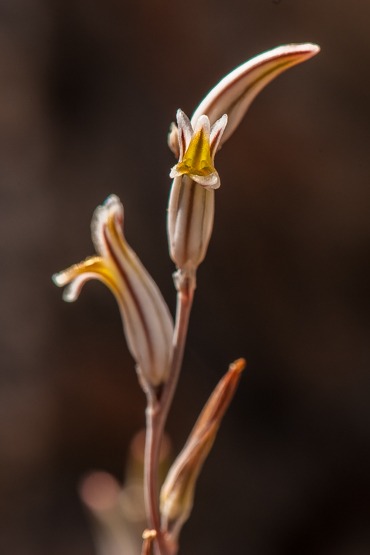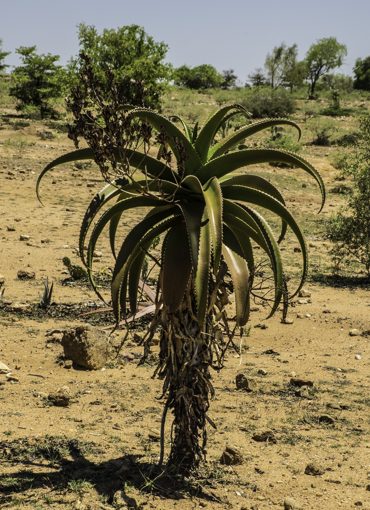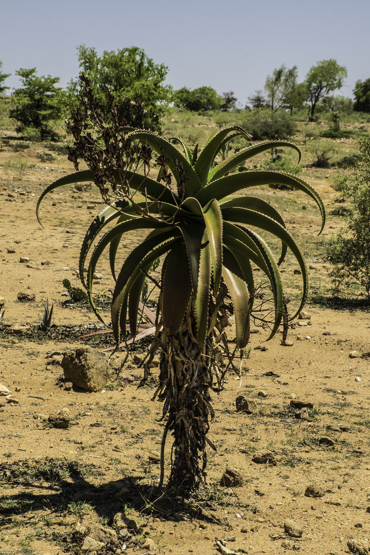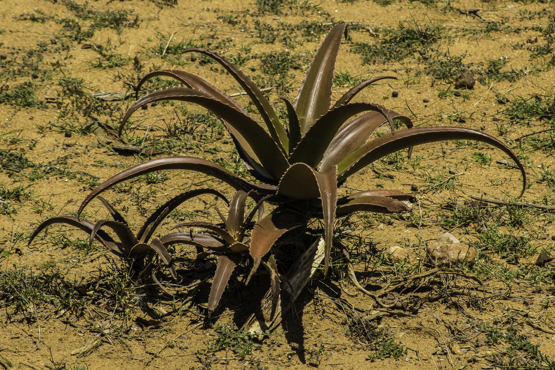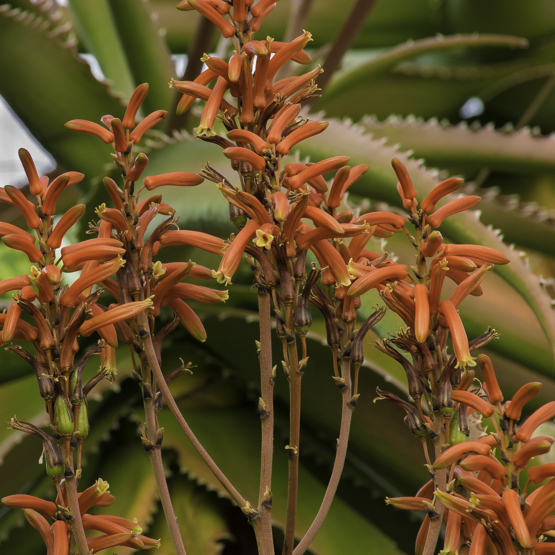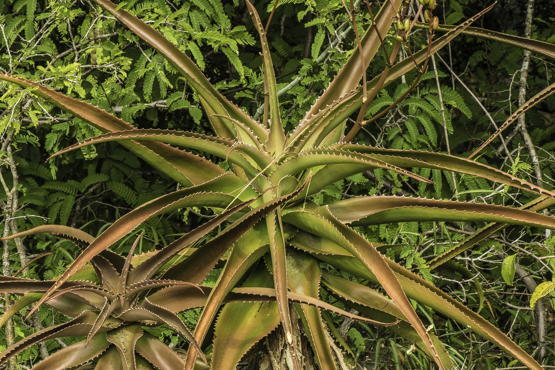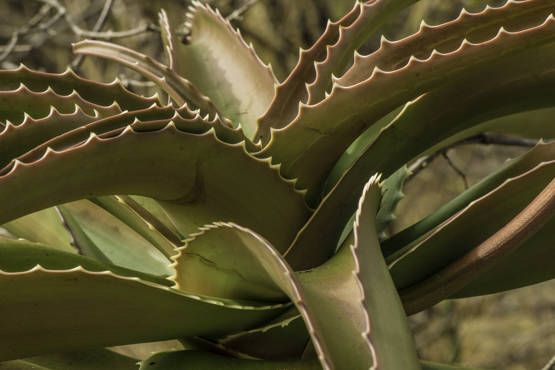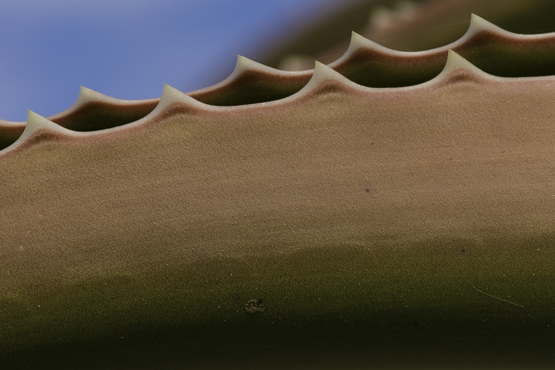History
Kumara plicatilis, better known as Aloe plicatilis, has been in cultivation for a very long time. It is certain that around 1690, the plant was grown in the famous garden of the United East-India Company (VOC) in Cape Town (now called the Company’s Garden). It was more than 60 years before 1753 when Linnaeus introduced the binary nomenclature in his ‘Species Plantarum’ in which species were recorded by means of a genus name followed by the species name. Until then, people used a short description in Latin. In this case:
Aloe Africana arborescens Montana non Spinosa, folio longissimo plicatili, Flore rubro.
In English, this roughly means: “an African aloe developing into a tree, growing in the mountains, without spines, with very long folded leaves and red flowers”.
Obviously, referring to a plant or animal in this way becomes overly complex as more and more species are discovered.
The Latin description was given by Heinrich Bernhard Oldenland, a.k.a. Henrik Bernard Oldenland (in botanical literature: Henricus Bernardus Oldenlandus). He was born in Germany in or around 1663, studied medicine and botany in Leiden, and had arrived in Cape Town in 1688 as an employee of the VOC. It is quite possible that in 1689 he himself brought along K. plicatilis as a participant in a 3-month expedition that went all the way to present-day Aberdeen. From 1693 until his early death in 1697, he was the head of the company garden.
The oldest known image of K. plicatilis is a water colour painting made in 1694 by Alida Withoos (fig. 1). This painting and 12 other water colours were commissioned by Joan Huydecoper, who between 1673 and 1693 was mayor of Amsterdam no less than 13 times, and Jan Commelin (Joanne Commelino), a merchant in herbs and medicinal drugs, whose last name is also spelled Commelijn. In 1682, these two gentlemen had initiated the creation of a Hortus Medicus (a garden with medicinal plants) in Amsterdam. Such a garden already existed at the Binnengasthuis, but as garden lovers, they wanted to make the scope a bit wider and also offer space for ornamental plants. So, in fact, they established a botanical garden (the forerunner of the current Hortus Botanicus). Thanks to their many contacts (Huydecoper was a member of the board of the VOC and a cousin of Simon van der Stel, the governor of the Cape of Good Hope), they were able to obtain plant material from many parts of the world.
The Moninckx atlas
Huydecoper and Commelin did not create a herbarium, but instead, they set up a kind of image bank. They called it “Figures of foreign plants, in the Medicinal Garden of the city of Amsteldam”. The image bank consists of 420 water colours on sheets of parchment paper about 56 by 40 cm in size. These paintings were produced between 1686 and 1707. By far most of them (273) were made by Jan Moninckx. In addition, 101 were made by Maria Moninckx (it is unknown which family relationship these two had). Then of course Alida Withoos with 13 works and finally Johanna Helena Herolt-Graff with 2 drawings. The remaining 31 water colours are not signed. Alida Withoos also painted Tulista (Haworthia) minima as part of the same assignment, a duo – water colour of Haw. retusa with Tulista (Haw.) margaritifera and also Aloe vera. For the latter she used two sheets of parchment: one was for the plant with the lower part of the flower stem and on the other sheet the flower stem continued to end in a beautiful, branched bunch of yellow flowers. The parchment sheets were later pasted on paper and bound. All this resulted in eight tomes. The complete series is called the Moninckx atlas. The tomes were published between 1686 and 1709. All 420 plates can be seen on the website of the University of Amsterdam. In 1749 a ninth part was started but eventually contained only five paintings.
Jan Commelin had also begun to depict and describe the plants in the Hortus Medicus in a series of books, but he died in1692. The first volume, called “Rariorum Plantarum Horti Medici Amstelodamensis descriptio & icones” appeared posthumously in 1697. After this, the work was continued by his nephew and successor Casper, a.k.a. Casparo Commelino. In 1701, part 2 was published. In this section, the South African plants, including Kumara plicatilis are discussed. One of the nice things about these books is that everything, including the title sheet, is written in both Latin and Dutch. See figure 2 for the Dutch title sheet.
In describing K. plicatilis, he writes “This plant grows at the Cape of Good Hope on high mountains in the rocks thirteen feet high, and one and a half feet thick and bears flowers in the month of October“. He also mentions, among other things, that the older leaves are not stiff as in most Aloes, but slightly folded. This explains the name plicatilis (= folded). In drawing 3, the leaves are also clearly shown this way. He goes on to write that the plant has been growing in the Hortus Medicus for many years, but without flowering and that the flowers and the fruit have been re-drawn from a book by Nicolaas Witsen “who has lent me this book showing all kinds of plants in Africa painted from life”. Nicholas Witsen was also mayor of Amsterdam (between 1682 and 1706) and administrator of the VOC and friends with Simon van der Stel and his son and successor Willem Adriaen. He also was an enthusiastic collector of fossils, minerals, archaeological finds, animals, plants, and drawings of all that. The drawings of South African plants and animals were collected in three tomes called the ‘Codex Witsenii’. Of these, only Part 1 has been preserved. K. plicatilis is not mentioned in there.
Nomenclature
Linnaeus described the species in 1753 as a variety of Aloe disticha (distichus = in two rows). In 1768, Philip Miller elevated the variety to species. Those who search well can also find the plant under the name Aloe linguaeformis (1782, Linnaeus the younger), Aloe tripetala (1783, Friedrich Medikus), Aloe lingua (1785, Thunberg), Kumara disticha (Friedrich Medikus,1786), A. flabelliformis (Salisbury,1796), Rhipidodendrum plicatile (Haworth, 1821) and also under some even less well-known names. Lingua, by the way, means tongue and linguaeformis is tongue-shaped, obviously referring to the shape of the leaf.
The name Aloe, by the way, is many centuries old. It is assumed to come from the Arabic ‘alloh’ (or ‘alloch’ or ‘alloeh’), which is the name for bitter substances such as the juice of aloes.
The fan-shaped growth, K. plicatilis has in common with K. haemanthifolia, which occurs in the same area. Until recently, both were classified in the subgenus ‘Kumara’. Partly on the basis of DNA research, this subgenus was recently (2013) elevated to genus level.
In South Africa, an Aloe is often called an Aalwyn. Because of its shape, K. plicatilis is called the ‘Fanaalwyn’. The name ‘Bergaalwyn’ is also used in connection with the occurrence in the mountains. The leaf shape gives rise to the name ‘Tongaalwyn’. The name ‘Franschoekaalwyn’ (after the habitat) is also used. while the resemblance to Aloidendron (Aloe) dichotomum (the quiver tree) has earned it the name ‘Cape Quiver Tree’.
Nature
The species occurs in the mountains of the Western Cape, from Elandskloof to Franschhoek. This is an area with a Mediterranean climate and rainfall mainly in winter. The annual rainfall is between 600 and 1500 mm.
The plants grow on steep, rocky slopes facing south (please remember, that in the southern hemisphere this is the side with the least sun) in well-drained, sandy, slightly acidic soil. See images 4 – 6. They can become up to 5 meters tall. In nature, only the tops of the stems bear leaves. These are strap-shaped, up to 30 cm long, and 4 cm wide. Salm-Dyck also described a var. major in which the leaves grow to more than 30 cm long and 5 cm wide, but to me that does not sound like a substantial difference.
It seems that there are about seventeen separate localities, all of which are at least 10 km apart. Although the species is quite rare, it is not threatened. There are several protected areas in which the plants occur, such as the Jonkershoek Nature Reserve, the Hottentots Holland Nature Reserve, the Limit Mountain Nature Reserve, and Horse Mountain Nature Reserve.
In nature, plants are sometimes damaged by the Cape klipdas (Procavia capensis capensis), which in South Africa is called ‘dassie’.
In periods of drought, these animals, which look a bit like guinea pigs, climb to the top of the branches, where they first gnaw away the bark and then feast on the juicy inner parts. They continue to do that until the branch collapses. If the fallen branch does not end up on bare rock, but on soil, it will root quite quickly. A kind of unintentional propagation.
The habitats are characterized by the typically South African fynbos vegetation (Mediterranean-like), with among other things Protea and Erica species. As Commelin reported, the plants bloom in October, at the end of winter.
As is the case with A. vera, the sap has healing properties associated with injuries and is sometimes drunk to stimulate the immune system. There are also reports that the juice is used as a remedy against diabetes.
Cultivation
K. plicatilis is easy to grow. Due to the fact that the conditions in cultivation are usually less harsh, the leaves are preserved for much longer, allowing the plants to bear leaves from bottom to top. See the photo of a specimen in Madeira’s botanical garden (fig. 7 and 8).
In accordance with the natural growing conditions, a well-drained soil with a pH between 5.5 and 6.5 is recommended. In the Northern hemisphere, growth is in summer. In winter, the plant should be kept dry. In summer, they can also be kept outside. Propagation can be done by seed or cuttings. At 20°C, the seeds germinate after about 4 weeks. The species is known as a slow grower. Yet they can also reach a considerable size in cultivation, even in a greenhouse.
In 1904, Alwin Berger reported a crossing with Gonialoe (Aloe) variegata, the partridge Aloe. The hybrid was allegedly produced by the Englishman Justus Corderoy and was therefore called Aloe x Corderoyi. Maybe he expected the result of the cross between these totally different aloes to be something spectacular, but in fact, it was disappointing. The plants are very similar to K. plicatilis. Only the leaves are arranged in a spiral around the trunk, in contrast to K. plicatilis, in which they are in two straight rows.
Literature:
Berger, A. (1904): A new Aloe hybrid, Monatschrift fuer Kakteenkunde 14:61
Commelin, C. (1701). Rariorum Plantarum Horti Medici Amstelodamensis Historia: 5
Engler, H.G.A. (1908). Das Pflanzenreich, regni vegetabilis conspectus, 38: 322 – 324
Website about the plants of South Africa: http://www.plantzafrica.com/plantab/aloeplicatilis.htm
The Moninckx Atlas can be found via the URL: https://allardpierson.nl/collecties/natuurlijke-historie/moninckx-atlas/moninckx-atlas-index/#l

Fig. 1. Water colour of Kumara plicatilis made by Alida Withoos for the Moninckx atlas in 1694.

Fig. 2. Title page of “Rariorum Plantarum Horti Medici Amstelodamensis Historia” (part 2) by Casper Commelin published in 1701.

Fig. 3. Drawing of Kumara plicatilis in “Rariorum Plantarum Horti Medici Amstelodamensis Historia” (part 2) by Casper Commelin published in 1701.

Fig. 4. A large Kumara plicatilis in the Du Toits gorge in the Western Cape
(photo Coby Keizer).
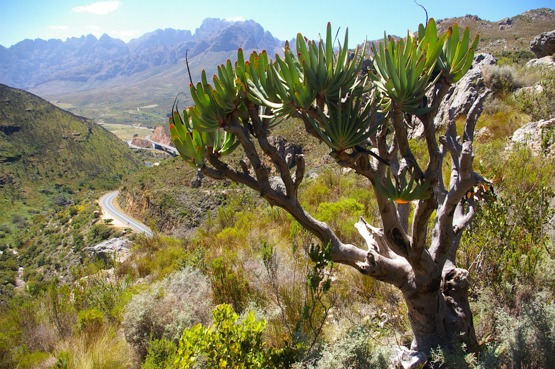
Fig. 5. In nature, only the tops of the branches of Kumara plicatilis bear leaves (photo Wim Alsemgeest).

Fig. 6. In the new growth, the tips of the leaves are tinged red
(photo Bertus Spee).

Fig. 7. Kumara plicatilis in the Botanical Garden of Madeira in full swing with flowers and fruits.
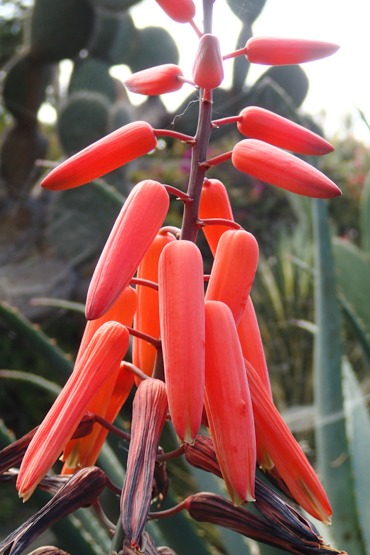
Fig. 8. Kumara plicatilis in bloom in the Botanical Garden of Madeira.
